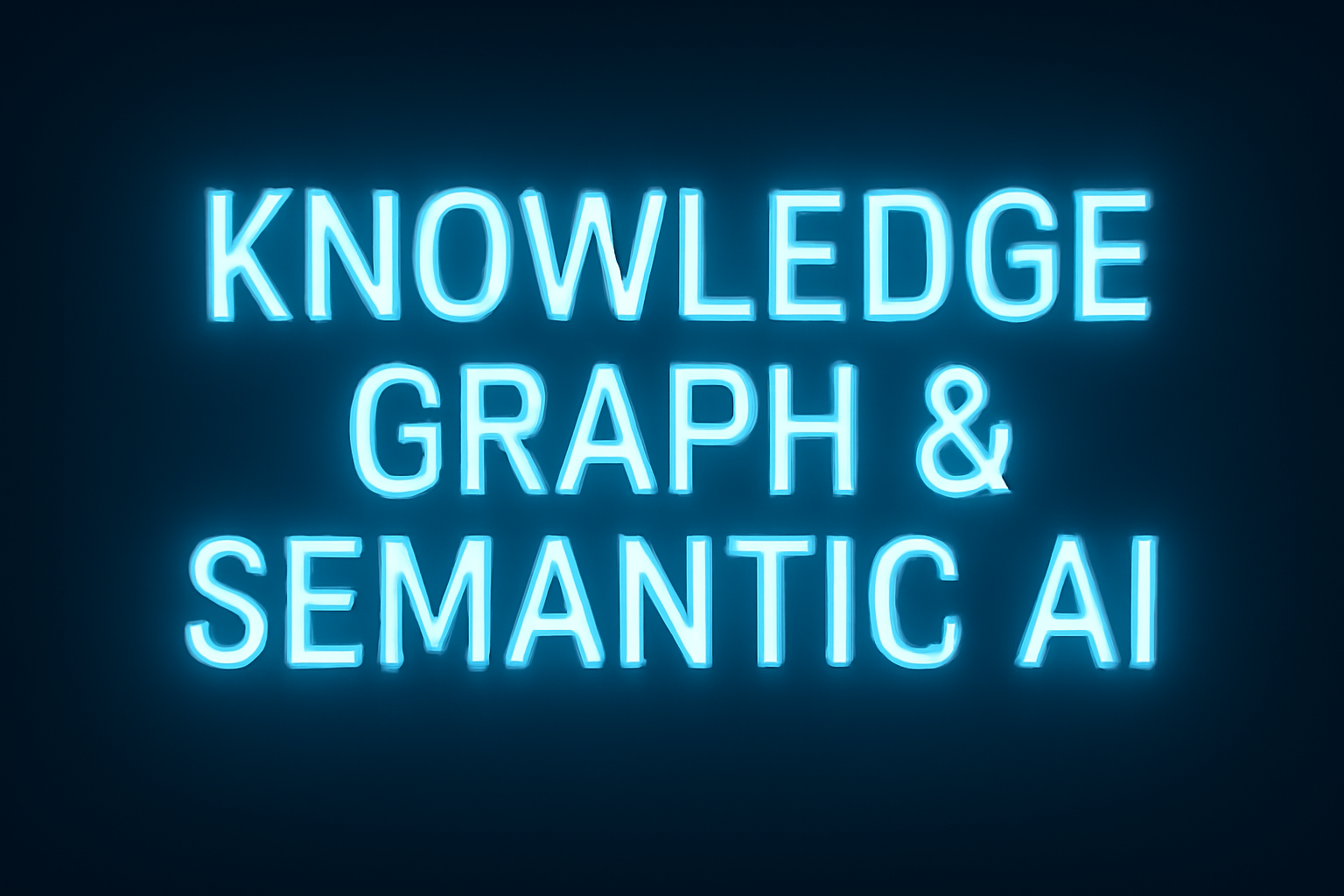Conceptual Adaptation Using Knowledge Graphs and Semantic AI

Artificial Intelligence has rapidly evolved from systems that simply follow instructions to machines that can learn, adapt, and make intelligent decisions. Among the most powerful advancements driving this transformation are knowledge graphs and semantic AI, which together enable conceptual adaptation. In simple terms, conceptual adaptation allows AI to take what it has learned in one domain and apply it intelligently to another, much like how humans adapt knowledge across different contexts. This capability is not only reshaping machine learning but is also opening the door to smarter, more human-like AI systems.
Understanding Conceptual Adaptation in AI
Conceptual adaptation is the process where AI systems transfer knowledge from one field to another while understanding the context of use. For example, a system trained to understand consumer purchasing behavior in e-commerce might use that knowledge to analyze patient decision-making in healthcare. While the domains differ, the underlying principles of preferences, habits, and decision processes overlap.
Unlike traditional machine learning systems, which often fail when faced with new or unseen contexts, conceptual adaptation leverages semantic connections to create flexible reasoning. It is like teaching a machine not just isolated facts, but how to understand relationships between concepts, so it can apply insights to entirely new situations.
The Role of Knowledge Graphs
Knowledge graphs are the foundation of conceptual adaptation. A knowledge graph connects entities such as people, organizations, products, or ideas, and defines the relationships between them. Instead of viewing data as isolated points, knowledge graphs create a web of meaning where each piece of information is interconnected.
Take, for instance, the statement: “John works at Google.” A traditional database would simply store this as text. A knowledge graph, however, understands that John is a person, Google is an organization, and “works at” defines an employment relationship. This deeper contextual understanding allows AI to reason more intelligently.
Ontologies and hierarchies further enhance this reasoning. If a system knows that a car is a type of vehicle, and vehicles fall under transportation, it can infer broader patterns and adapt knowledge at multiple levels of abstraction.
Semantic AI: Adding Meaning to Data
Semantic AI goes beyond keyword recognition and instead focuses on understanding meaning. It mimics human comprehension by extracting concepts, contexts, and relationships from language. For instance, when someone says, “I’m feeling blue,” semantic AI recognizes the emotional meaning rather than interpreting the statement literally as a color description.
Modern systems use techniques such as natural language processing, embedding models, and transformer architectures to achieve this. Embeddings allow AI to understand similarities between words by mapping them in a multi-dimensional space. Transformers enhance reasoning by focusing attention on the most relevant parts of input data, much like humans concentrate on key details during a conversation.
This semantic layer is what enables AI to perform conceptual adaptation with precision, since it can interpret meaning and context rather than relying solely on patterns.
Core Mechanisms of Conceptual Adaptation
Several mechanisms power the process of conceptual adaptation.
Concept mapping allows AI to align equivalent concepts across different domains. For example, a customer in business and a patient in healthcare both represent service recipients. This alignment enables knowledge transfer across industries.
Semantic distance measurement helps systems calculate how close or far apart two concepts are in meaning. This allows AI to decide which knowledge is transferable.
Dynamic graph updates ensure that systems evolve as new information becomes available. This feature was critical during the COVID-19 pandemic, where AI models quickly learned new terms and relationships related to the virus, treatment methods, and public health strategies.
Multi-modal integration further strengthens adaptation by combining information from text, images, sounds, and other data types, making AI more robust and human-like in its reasoning.
Practical Implementation Strategies
For developers and enterprises, implementing conceptual adaptation involves several techniques.
Graph neural networks process connected data and detect patterns within knowledge graphs. Knowledge graph embeddings transform complex relational data into numerical forms that systems can compute efficiently. Semantic search ensures users receive results that align with intent rather than exact keyword matches.
Real-time adaptation algorithms continuously improve a system’s reasoning with every new interaction, enabling AI to learn on the fly. Combined with few-shot learning, meta-learning, and neuro-symbolic integration, these systems become even more capable of adapting across domains.
Real-World Applications
Conceptual adaptation is no longer just theoretical. It is driving innovation across multiple industries.
In healthcare, AI systems are identifying hidden links between medical conditions and predicting drug effectiveness. In e-commerce, conceptual adaptation powers recommendation engines that link user preferences to broader product categories. Financial institutions use it to detect fraud by adapting past patterns to new scams. In education, personalized learning platforms adapt teaching methods to individual student needs.
Each of these applications highlights how conceptual adaptation increases efficiency, accuracy, and relevance in real-world decision-making.
Challenges in Conceptual Adaptation
Despite its promise, challenges remain. Large-scale knowledge graphs can be computationally heavy, requiring optimization techniques such as indexing and parallel processing. Semantic ambiguity, where words or concepts have multiple meanings, remains a hurdle. Quality assurance and validation frameworks must be established to ensure accuracy and reliability.
Bias in data is another pressing concern. AI systems risk perpetuating human biases unless carefully monitored and trained on diverse, representative datasets. Addressing these challenges requires continuous refinement and oversight.
Integration with Enterprise Systems
For businesses, the success of conceptual adaptation depends on seamless integration with existing enterprise systems. APIs allow different systems to access adaptation services. Secure database integration ensures consistent, high-quality knowledge transfer. Monitoring frameworks provide ongoing performance analysis, while privacy compliance ensures sensitive data remains protected.
Companies like Napollo are leading the way in implementing these advanced solutions. By integrating semantic AI and knowledge graph technologies into enterprise platforms, Napollo helps businesses unlock deeper insights, optimize operations, and future-proof their digital strategies.
Future Trends
The future of conceptual adaptation looks even more transformative. The fusion of large language models with knowledge graphs will create systems capable of both conversational fluency and logical reasoning. Quantum computing may dramatically accelerate graph reasoning, making adaptation faster and more scalable. Federated learning will allow systems to learn collaboratively across organizations without compromising data privacy.
Explainable AI will ensure transparency, allowing users to understand how adaptation decisions are made. These advancements will bring AI closer than ever to human-like intelligence while maintaining efficiency at machine scale.
Conclusion
Conceptual adaptation using knowledge graphs and semantic AI is reshaping the way machines understand and interact with the world. By moving beyond rigid rule-based approaches to systems that comprehend meaning, context, and relationships, AI is becoming more adaptive, intelligent, and useful.
Businesses that embrace these technologies stand to gain competitive advantages through improved decision-making, personalized experiences, and scalable innovation.
At Napollo, we specialize in harnessing semantic AI and knowledge graph technologies to enhance digital presence and optimize online performance. Our advanced semantic SEO strategies go beyond traditional approaches by focusing on meaning, intent, and contextual authority, ensuring sustainable visibility and growth.
As the field continues to evolve, the key will be combining technical excellence with a deep understanding of human needs. Conceptual adaptation is not just about smarter machines, but about building intelligent systems that complement human intelligence. The future of AI lies in this collaboration, and with Napollo’s expertise, businesses can lead in shaping that future.
- Art
- Causes
- Crafts
- Dance
- Drinks
- Film
- Fitness
- Food
- Games
- Gardening
- Health
- Home
- Literature
- Music
- Networking
- Other
- Party
- Religion
- Shopping
- Sports
- Theater
- Wellness


